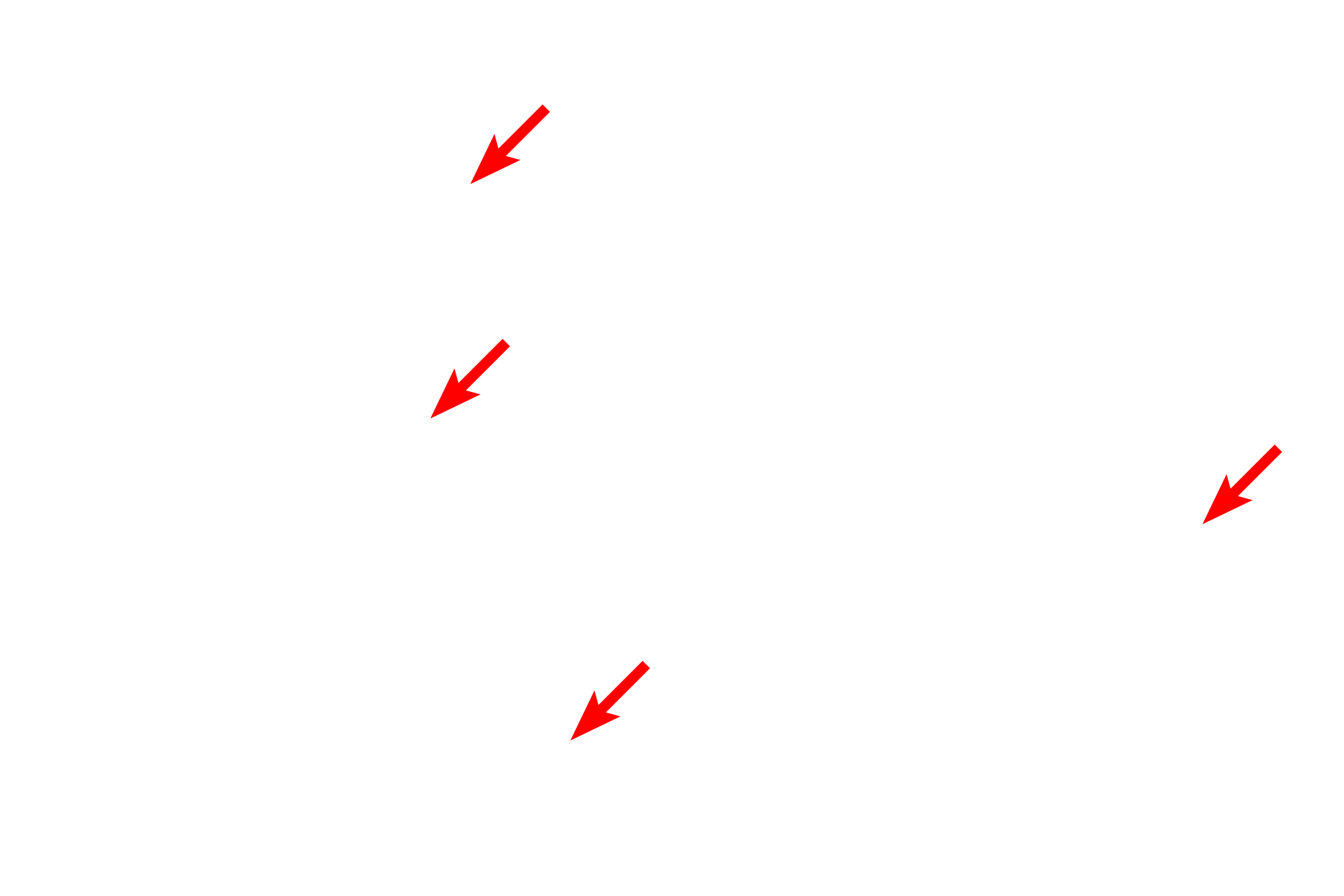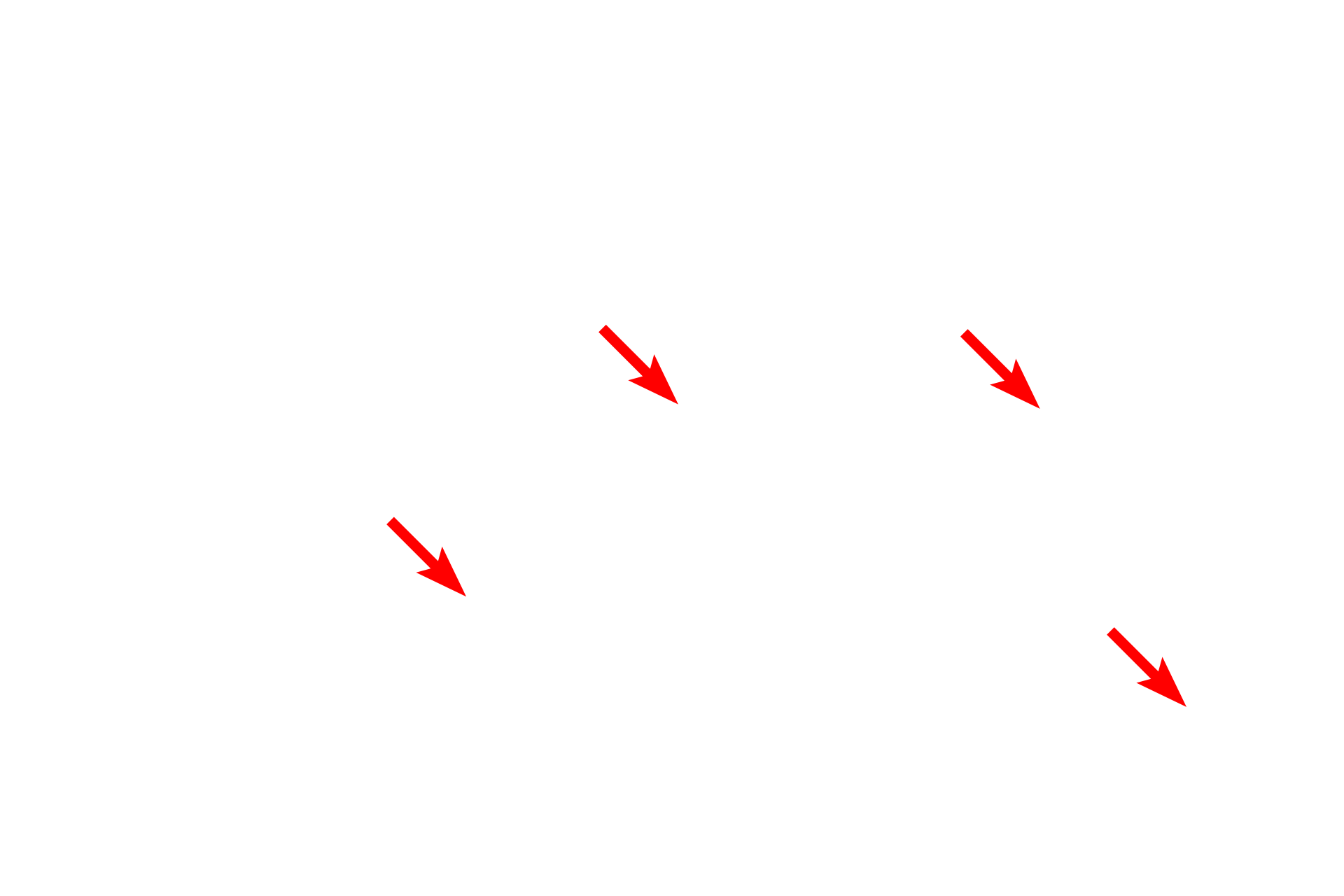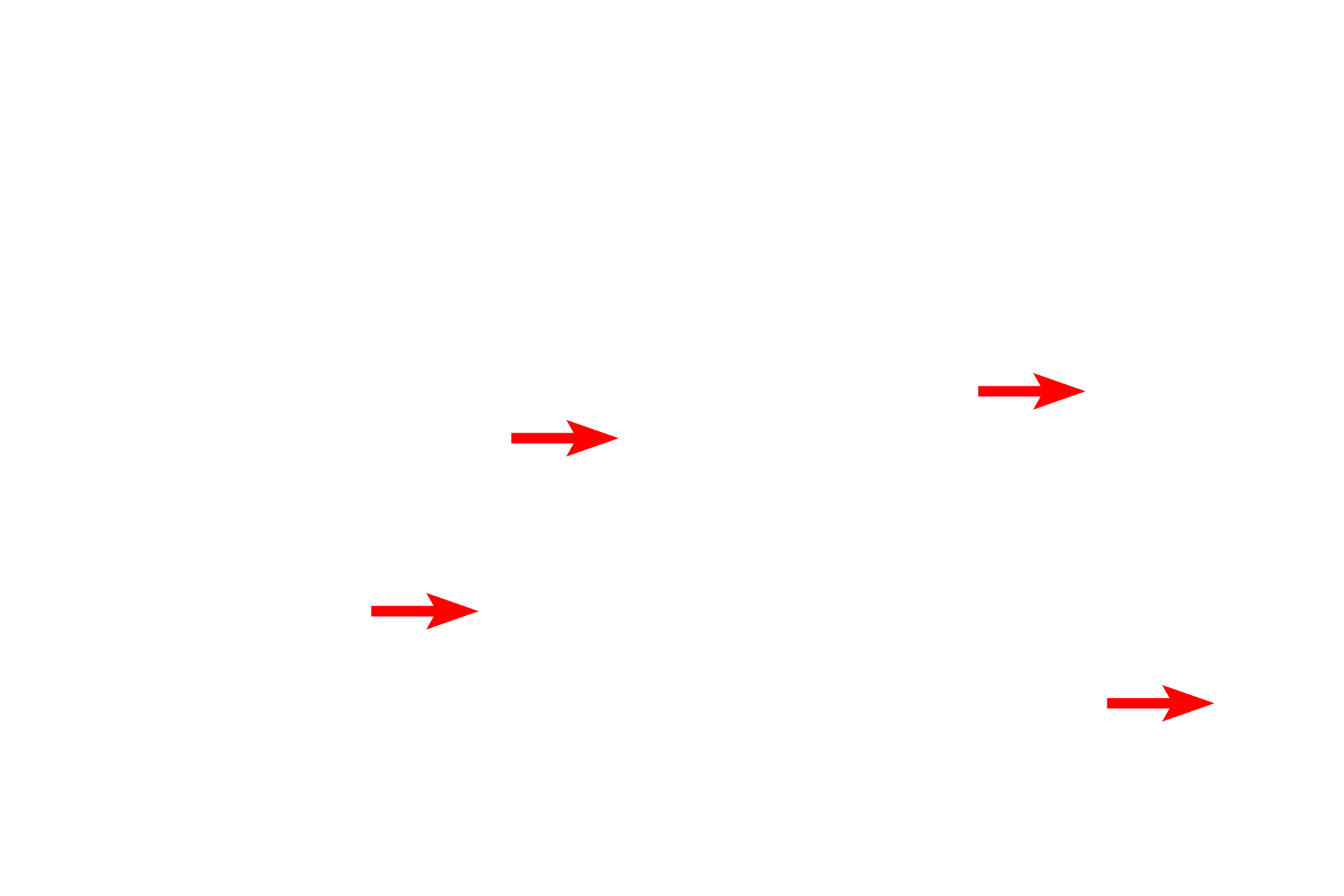
Schwann cells
A second category of Schwann cells surrounds axons in peripheral nerves and consists of non-myelinating and myelinating types. Non-myelinating Schwann cells invest numerous small axons, with each axon aligning in a groove on the cell. Myelinating Schwann cells ensheath single axons with numerous spiraling wraps of membrane, forming a myelin segment or internode. A series of myelinating Schwann cells forms a segmented myelin sheath along a single axon. The myelin sheath is a lipid-rich, insulating wrapping of an axon, which increases the conduction velocity of an action potential. 1000x

Non-myelinating Schwann cells
A second category of Schwann cells surrounds axons in peripheral nerves and consists of non-myelinating and myelinating types. Non-myelinating Schwann cells invest numerous small axons, with each axon aligning in a groove on the cell. Myelinating Schwann cells ensheath single axons with numerous spiraling wraps of membrane, forming a myelin segment or internode. A series of myelinating Schwann cells forms a segmented myelin sheath along a single axon. The myelin sheath is a lipid-rich, insulating wrapping of an axon, which increases the conduction velocity of an action potential. 1000x

Unmyelinated axons
A second category of Schwann cells surrounds axons in peripheral nerves and consists of non-myelinating and myelinating types. Non-myelinating Schwann cells invest numerous small axons, with each axon aligning in a groove on the cell. Myelinating Schwann cells ensheath single axons with numerous spiraling wraps of membrane, forming a myelin segment or internode. A series of myelinating Schwann cells forms a segmented myelin sheath along a single axon. The myelin sheath is a lipid-rich, insulating wrapping of an axon, which increases the conduction velocity of an action potential. 1000x

Myelinating Schwann cells
A second category of Schwann cells surrounds axons in peripheral nerves and consists of non-myelinating and myelinating types. Non-myelinating Schwann cells invest numerous small axons, with each axon aligning in a groove on the cell. Myelinating Schwann cells ensheath single axons with numerous spiraling wraps of membrane, forming a myelin segment or internode. A series of myelinating Schwann cells forms a segmented myelin sheath along a single axon. The myelin sheath is a lipid-rich, insulating wrapping of an axon, which increases the conduction velocity of an action potential. 1000x

Myelin sheaths
A second category of Schwann cells surrounds axons in peripheral nerves and consists of non-myelinating and myelinating types. Non-myelinating Schwann cells invest numerous small axons, with each axon aligning in a groove on the cell. Myelinating Schwann cells ensheath single axons with numerous spiraling wraps of membrane, forming a myelin segment or internode. A series of myelinating Schwann cells forms a segmented myelin sheath along a single axon. The myelin sheath is a lipid-rich, insulating wrapping of an axon, which increases the conduction velocity of an action potential. 1000x

Myelinated axons
A second category of Schwann cells surrounds axons in peripheral nerves and consists of non-myelinating and myelinating types. Non-myelinating Schwann cells invest numerous small axons, with each axon aligning in a groove on the cell. Myelinating Schwann cells ensheath single axons with numerous spiraling wraps of membrane, forming a myelin segment or internode. A series of myelinating Schwann cells forms a segmented myelin sheath along a single axon. The myelin sheath is a lipid-rich, insulating wrapping of an axon, which increases the conduction velocity of an action potential. 1000x

Area shown in next image by EM
A second category of Schwann cells surrounds axons in peripheral nerves and consists of non-myelinating and myelinating types. Non-myelinating Schwann cells invest numerous small axons, with each axon aligning in a groove on the cell. Myelinating Schwann cells ensheath single axons with numerous spiraling wraps of membrane, forming a myelin segment or internode. A series of myelinating Schwann cells forms a segmented myelin sheath along a single axon. The myelin sheath is a lipid-rich, insulating wrapping of an axon, which increases the conduction velocity of an action potential. 1000x